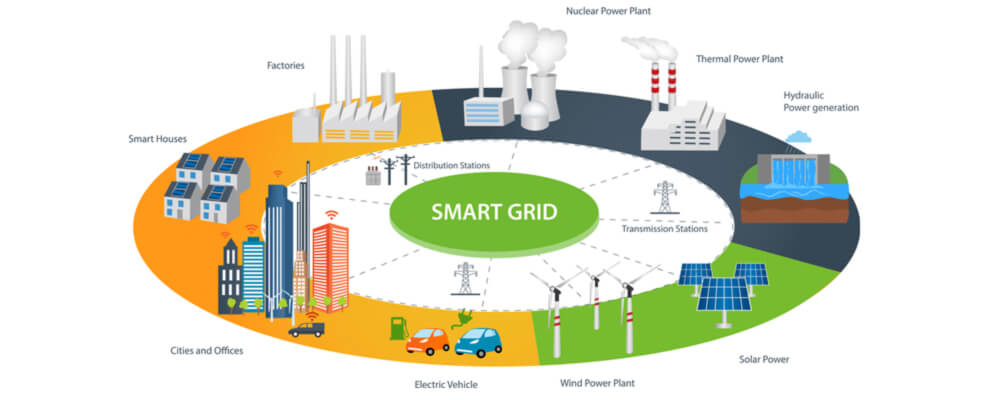The future of energy is renewable, so it makes sense that digital transformation is turning to new technology that conserves, rather than spends, energy. Smart grid technology is an emerging solution that integrates digital communication technology with two-way electricity flow to create a more sustainable network. But how does it work?

How Does Smart Grid Technology Work?
First and foremost, a smart grid is computer technology designed to improve communication and connectivity within a power network. The goal of this technology is to improve energy distribution to make it easier and more efficient to relay information from consumers to power networks, such as transformers and generation plants. Ultimately, this allows for power transmission to be gathered from multiple plants and used more efficiently.
Smart Meters
This technology upgrades everything about traditional energy transmission. For example, this technology uses smart meters installed in homes and businesses to replace analog meters. Smart meters are digital and capable of two-way communication about the supply and demand necessary to power buildings, which also serves to make energy flow more intuitive than ever.
More impressively, smart meters collect data for the grid. The data collected by the meters is analyzed at power generation plants to analyze and predict peak demands for power, which then allows the production of energy to be conserved during low demand. Overall, this means that the flexibility of the grid allows new types of renewable energy, such as solar or wind, to reduce stress to traditional energy networks.
Smart Versus Traditional Grids
Power grids have been used for decades to power homes, businesses, and important buildings like hospitals. But the traditional grids used by utility companies are frankly outdated for the current energy demand. More and more people are relying on energy to conduct their daily activities, so power must be both affordable and accessible.
Traditional means of powering generation plants can be expensive – and more than that, traditional grids are one-way streets that aren’t very efficient at all. Not only does this mean that power demands are not responsive, but it also means that a lot of energy is being wasted. With a smart technology solution, however, a new grid can make use of technology to make renewable energy more accessible for people and businesses.
Why Do We Need This Technology?
Climate change is the prevailing force behind getting smart technology like new power grids for renewable energy up and running. Most governments are aware that there is a count-down timer when it won’t be possible to reverse the adverse effects of climate change, which negatively impacts things like crops and water supply. The conundrum is this: how can we keep the energy we need to live modern life, but in a way that won’t worsen the climate problem?
That’s where smart technology comes into play. Many experts believe the updating grids to support renewable energy and to be more predictive is essential to reduce greenhouse gases and slow the progress of climate change. The technology applications within this solution make it much easier to integrate more cost-effective and energy-effective renewable resources.
How Else Will This Technology Be Beneficial?
Although powering residences and businesses is the goal of new grids, there are other ways this technology can benefit everyday people. For example, grids that support renewable energy also make it easier to install charging stations for other technology that uses renewable energy, such as hybrid and electric vehicles.
By making renewable energy more accessible through changing the current power infrastructure, it opens up new opportunities for other types of technology. Additionally, this technology can also benefit the consumer by reducing the costs of energy, which are steadily rising each year. Reducing the expense of peak power improves the technology that homes and businesses use, which also enables consumers to buy products that support renewable energy.
For the sake of the planet, renewable energy must be a top priority for everyone. The key to making renewable energy more widely accessible is by integrating smarter technology into existing grids so that solar and wind energy can replace traditional power grids. The additional benefit of this technology means that consumers will ultimately have lower costs for energy, as well.
Research and testing are key to the development of this technology. SABB RDS’ Microgrid and Smart Grid research platform, built using open platforms and technologies from leading companies, can be used to improve grid integration of renewable energy sources by implementing automated analytics, advancing situation awareness, and improving overall energy efficiency. Know more about the Microgrid and Smart Grid Testbed by SAAB RDS.
